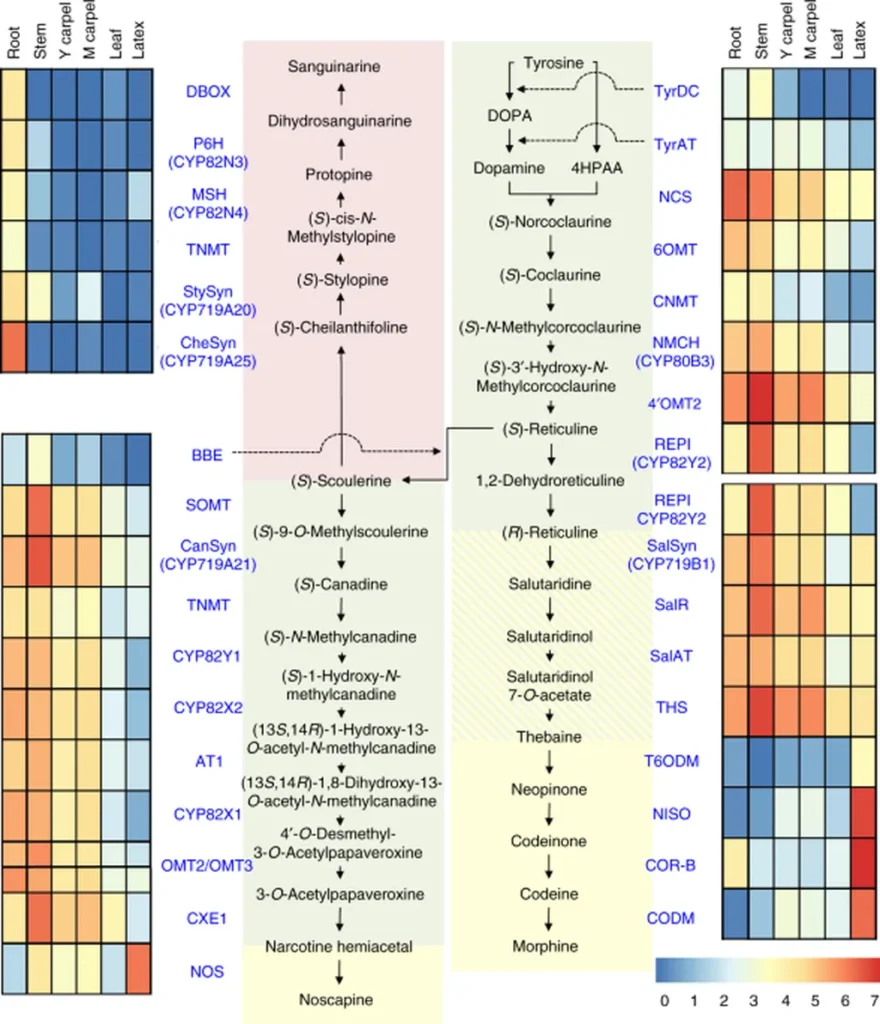In a groundbreaking study published in *Agrotechniques in Industrial Crops*, researchers have employed bioinformatics techniques to unravel the biosynthetic pathway of morphine, the most notable alkaloid derived from the opium poppy. Led by Nazila Bagheri of the Agricultural Biotechnology Department at Azarbaijan Shahid Madani University, the research offers a deeper understanding of the genetic and metabolic processes involved in morphine production, potentially revolutionizing agricultural practices and pharmaceutical applications.
Morphine, first extracted in 1803, has been a cornerstone in medicine due to its diverse therapeutic uses. However, the complex biosynthetic pathway of this alkaloid has remained a mystery until now. Bagheri and her team compiled nine genes associated with morphine biosynthesis through an extensive literature review, which were later confirmed using the NCBI BLAST tool. “Understanding the genetic interactions and metabolic pathways involved in morphine production is crucial for developing more efficient and sustainable methods of extraction,” Bagheri explained.
The study utilized STRING and Cytoscape to examine gene interactions and visualize molecular interaction networks, respectively. CytoHubba was employed to identify hub proteins within this network, providing insights into the key players in morphine synthesis. “The hub genes we identified are not only involved in morphine production but also play significant roles in other plant pathways,” Bagheri noted. This finding suggests that the gene network associated with morphine biosynthesis has broader functions beyond the production of primary metabolites.
The Kyoto Encyclopedia of Genes and Genomes (KEGG) pathway analysis highlighted the importance of metabolic pathways and the production of secondary metabolites. Gene Ontology (GO) analysis was conducted using gprofiler, and the promoter regions of important genes were analyzed using MEME. The results indicated that signal transduction might be involved in morphine synthesis, a discovery that could have profound implications for future research and agricultural practices.
The commercial impact of this research is substantial. By understanding the genetic and metabolic processes involved in morphine production, agricultural practices related to medicinal plants can be improved. This could lead to more efficient and sustainable methods of producing and extracting morphine, benefiting the pharmaceutical industry and agricultural sector alike. “This research provides a foundation for developing new strategies for morphine production and extraction, which could have significant economic and environmental benefits,” Bagheri said.
The study’s findings not only shed light on the biosynthetic pathway of morphine but also offer a blueprint for future research in the field of bioinformatics and agricultural biotechnology. As the demand for medicinal plants continues to grow, the insights gained from this research could pave the way for innovative agricultural practices and pharmaceutical applications.

